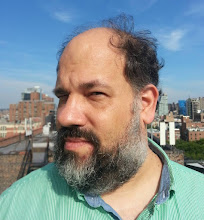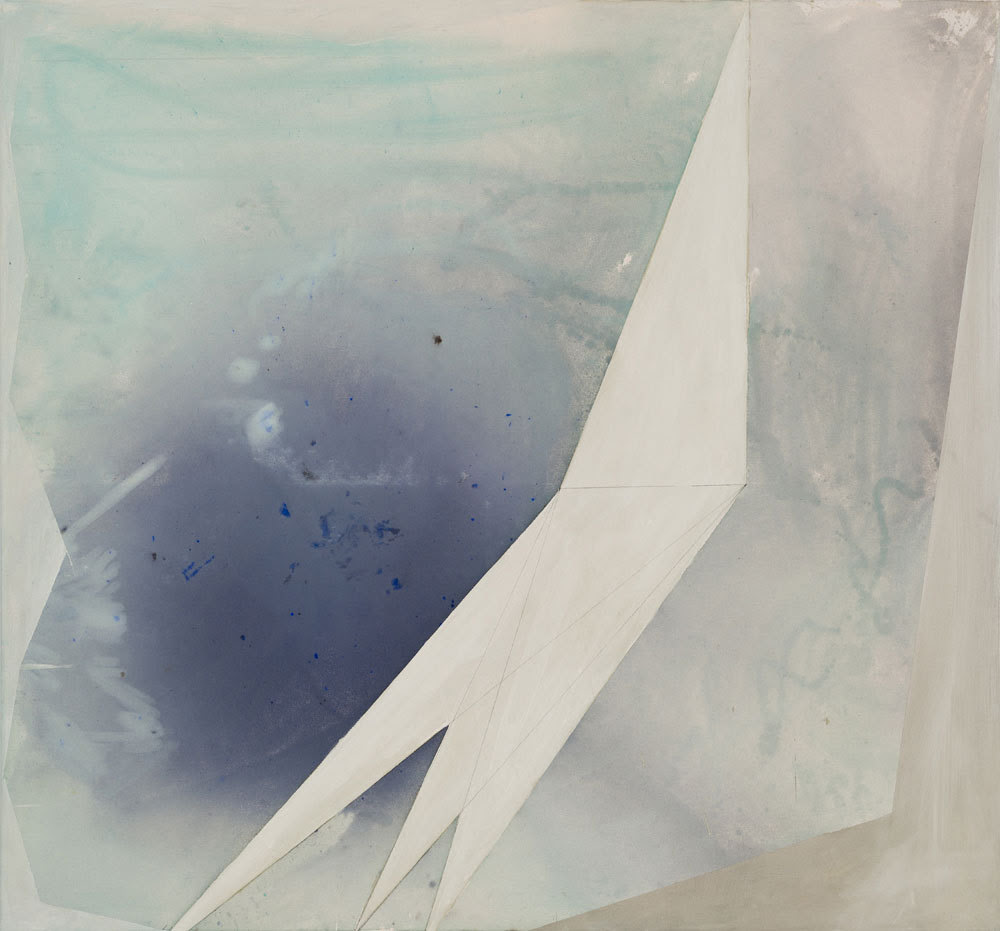I want to share with you the recent work of Josh Peters,
whom I first met in 2010, when he was living and working in
Northampton, Massachusetts, taking a break from his workaday life to
devote himself to his painting. His studio was housed in the same
building where I had organized a group exhibition at a printmaking
studio. A mutual friend had recommended him to me. Never one to pass up a
possibly interesting encounter, I agreed and dropped by the next day
when I had some time to spend. I was not disappointed.
In recent years Peters
has moved from New York to Los Angeles, where he has seen some definite
career high points: a solo exhibition at ACME Gallery in 2013, having
his work added to the Artist's Pension Trust, and a forthcoming
inclusion in the Pacific Coast Edition of New American Paintings,
selected by Apsara DiQuinzio, the Curator of Modern and Contemporary Art
at the Berkeley Art Museum. His work has changed considerably from then
to now, but a certain tenor remains constant. His work then was
figurative, and borrowed its narrative from Pop Art sources such as
comic books, pulp fiction paperbacks, TV nature specials, etc. Figures
were spectral and otherwise ephemeral. Peters's
work from that period always seemed to be qualitatively addressing a
narrative, even if the individual paintings resulted non-sequentially
and seemed more spectrally iconic, like portraits of mythic figures with
the tapestry of meaning mixed in. Peters is
still very much enamored of process, but rather than from one work to
the next, he now engages more immediately with agendas of meaning that
are more basely material. Projection of some interior justification upon
the images and marks in Peters' paintings
remains constant over time. There is always a muted quality to his
images, which mine a shared culture of introspection while remaining
topically opaque.
Looking at one of the earliest of Peters'
new paintings BLUEBIRD (2012, Acrylic on linen, 62 x 64 inches), I am
reminded that a degree of the Real always inhabits and animates what we
so easily call the Abstract. The suggestive quality of paint when
coupled with a specific motif such as a bird places the action of the
painter, primal but suspect, in league with the instinctual impulses of
nature. Peters places our sympathetic attention
within the charismatic territory of what he calls 'painted space,' a
liminal area that is simultaneously filled and qualified by his
orchestrated works, which he describes as attempting "to harness the
tension between opposites; the conscious and the unconscious, the
accidental and the very deliberate."
|
By comparison, Peters
most recent displayed image on his website, CRAB (2014, Acrylic on
canvas, 54 x 64 inches), operates by staining the back of the canvas and
then drawing positive if ephemerally constructed geometric forms on the
face of it, setting up a dynamic that seems to put opposites on the
same surface. The manifestation of an unspecified natural environment
suggests everything from the darkness of outer space to the depth of the
ocean, while the suggestion of a specific life form, structural and
pragmatic though descriptive of the sluggish, non-surface life of a
crustacean, is reduced, sleek, sharp edged, and striking. It also
resembles little and exists merely by the suggestion of a presence.
Literature is usually the biggest influence on Peters'
work. CRAB was inspired by the famous line from T.S. Eliot's The Love
Song of J. Edgar Prufrock: "I should have been a pair of ragged claws /
Scuttling across the floors of silent seas." Currently he is working on a
series of paintings inspired by Homer's cryptic line from the Odyssey
about the 'wine-dark sea'.
Likewise,
two other works, FLASH (2012, Acrylic on Linen, 64 x 62 inches) and
WOOLY M (2012, Acrylic on Unprimed Canvas, 84 x 81 inches) combine a
filling of the forward visual depth of the canvas, staining and
painting, leaving negative space in one and filling it up voluminously
in the other, create aesthetic statements that are complementary through
accrual of complexity rather than by sequence or similarity.
|
As Peters
states: The paintings are started either by wetting and painting the
back of the canvas (thus seeping through to what will become the front)
or by quickly and loosely covering the front of the canvas with a
viscous mix of acrylic paint and liquid medium. Based on this haphazard
beginning, additional elements and textures are added to the painting - a
delicate balancing act, as much of the initial layer is left exposed to
interact with the carefully placed forms which make up the second
layer.
The
seeping paint gives a feeling of hazy recollection.. incomplete objects
(a half-moon, the fragment of a shape created by enhancing areas of
this random beginning ) add to this feeling of the half-remembered and
ambiguous-but-allusion-laden. I am aiming for a poetic amalgamation of
naked process and careful planning.
Peters'
esthetic is ambivalent and counter-intuitive. No sooner does he make
one sort of painting than he switches gears to move in another
direction, to constantly observe the act of painting from a moving
perspective. He speaks of 'painting space' and I am immediately reminded
of the procedures outlined by Black Mountain poet Charels Olson about
Projective Verse, about the use of space and form following the energy
required to create a progressive form of poetic utterance that is not
merely oral, or literary, but physical, like the elements. I can
certainly understand how, given his previous proclivity towards opaquely
narrated scenarios with some emotional resonance; that he more recently
found himself depicting reductively yet expressively defined paintings
that were completely abstract. I spoke before of the movement not only
through styles but through a self-recognized identity which only new
forms can speak to. We do not necessarily see a person when looking at a
work of art, but if we are vigilant we can see the gears moving. As Peters
says of his work, “I want to freeze a painting while it is still in the
state of 'becoming'.. to capture that wild energy... yet achieve a
sense of balance that is pleasing to the eye and rewards sustained
looking.”
Website: http://www.josh-peters.com/
Email: jscottpeters@gmail.com




Comments
Post a Comment